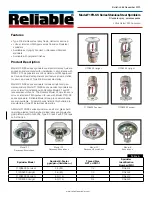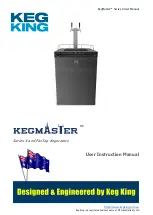
Rockwell Automation Publication 1790-UM001B-EN-P - April 2021
17
Chapter 2 Installation and Wiring
I/O System
Wiring Guidelines
Consider the following when wiring your system:
General
•
All module commons (COM) are connected in the analog module. The
analog common (COM) is not connected to earth ground inside the
module.
•
Channels are not isolated from each other.
•
Do not use the analog module’s NC terminals as connection points.
•
To ensure optimum accuracy, limit overall cable impedance by keeping
your cable as short as possible. Locate the I/O system as close to your
sensors or actuators as your application permits.
•
Use Belden 8761, or equivalent, shielded wire.
•
Keep shield connection to ground as short as possible.
•
Under normal conditions, the drain wire and shield junction must be
connected to earth ground via a panel or DIN rail mounting screw at the
analog I/O module end.
(1)
Input Modules
•
If multiple power supplies are used with analog inputs, the power supply
commons must be connected together.
•
The module does not provide loop power for analog inputs. Use a power
supply that matches the input transmitter specifications.
Output Modules
•
Voltage outputs (CH0 and CH1) of the 1790D-TNOV2 modules are
referenced to COM. Load resistance for a voltage output channel must be
equal to or greater than 1 K
.
•
Current outputs (CH0 and CH1) of the 1790D-NOC2 and 1790D-TNOC2
modules source current that returns to COM. Load resistance for a
current output channel must remain between 0 and 600
.
Effect of Transducer/Sensor and Cable Length Impedance on Voltage
Input Accuracy
For voltage inputs, the length of the cable that is used between the transducer/
sensor and the module can affect the accuracy of the data that is provided by
the module.
(1) In environments where high-frequency noise may be present, it may be necessary to directly
ground cable shields to earth at the module end and via a 0.1 μF capacitor at the sensor end.
















































